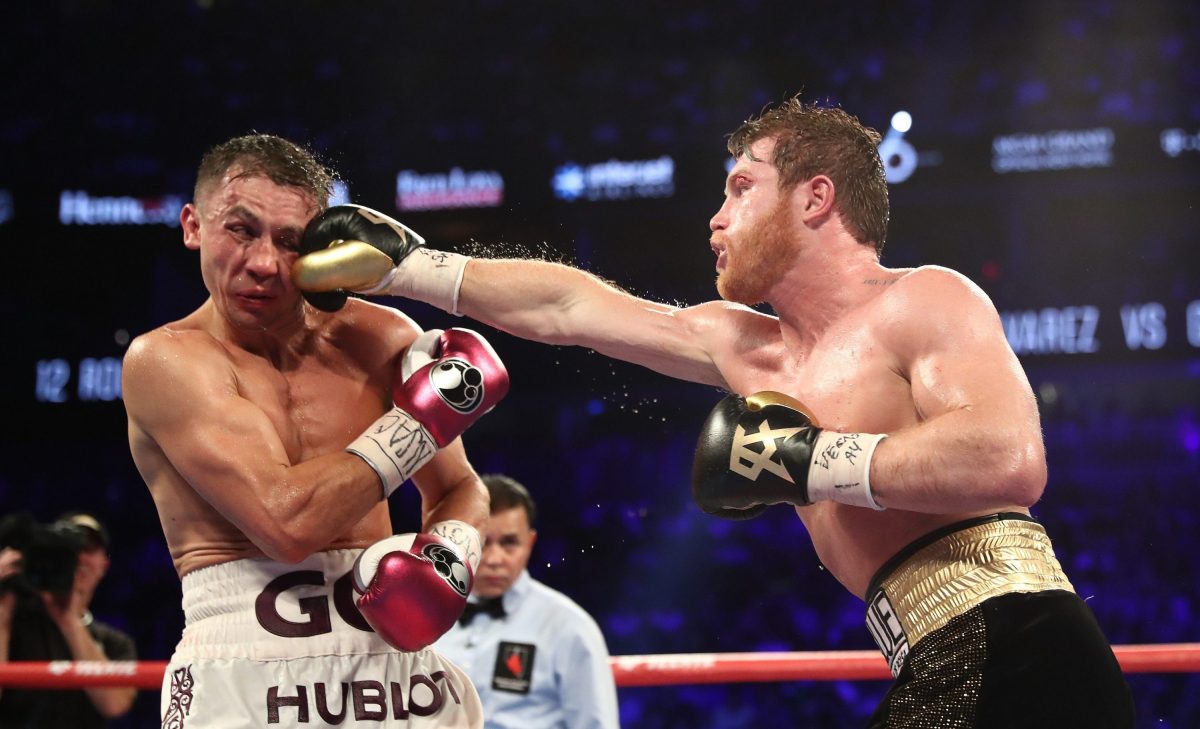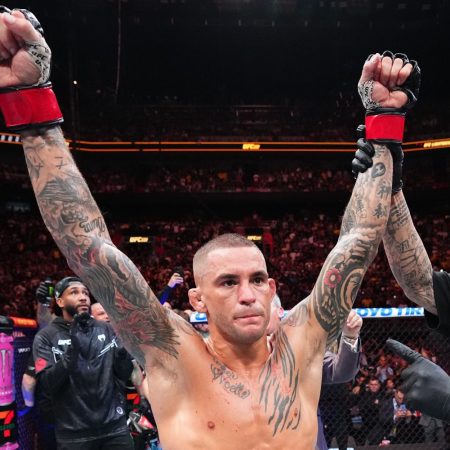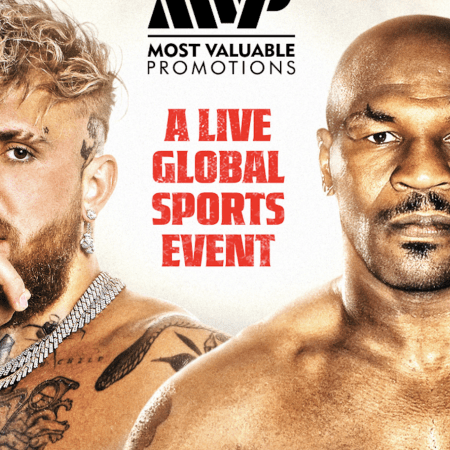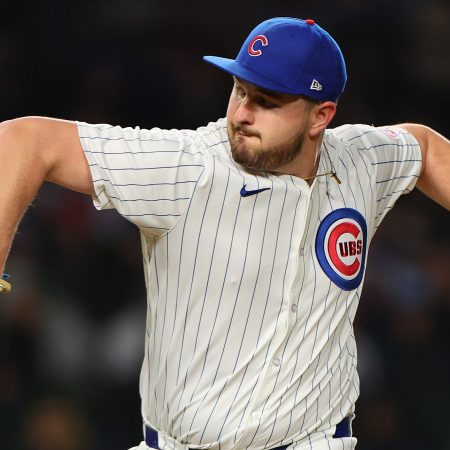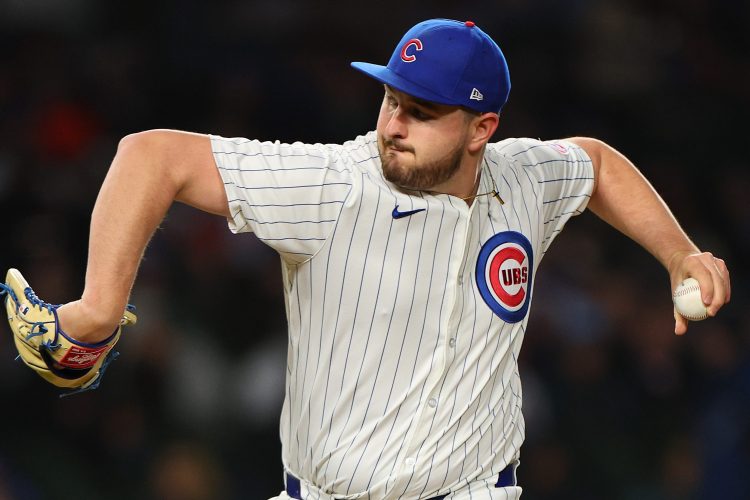Truly, Muhammad Ali was the gift that kept on giving to boxing. Not only did he earn the nickname, The Greatest, but he had a genius for coming up with fun ways to remind everyone he warranted that status. Or look at Sugar Ray Robinson, who was willing both to get in the ring with the Raging Bull Jake LaMotta and on the dance floor with Gene Kelly.
You weren’t just a champ; you were an entertainer, too. Throw in the fact that becoming heavyweight champion was an honor akin to getting elected Pope in terms of worldwide recognition and those who ran the sport of boxing got spoiled. It was hard to imagine a time when it would be less of a national obsession in America than a niche passion.
But here we are.
Understand: There’s still huge money in boxing. If you were ridiculously athletic and decided to pursue a career purely based on what could make your wallet fattest, you might glance at the Forbes list of the 100 Highest Paid Athletes and immediately lace up the gloves.
Floyd “Money” Mayweather was the #1 earner in 2018, with $285 million from the past 12 months. This is more than #2 and #3 collected combined. (Soccer players Lionel Messi and Cristiano Ronaldo wound up battling it out yet again for those spots, with Messi coming out on top with $111 million to $108 million for his archrival.)
But as you read more of the list, you might reconsider. Because the top 100 has nine soccer players, 14 Major League Baseball players, 18 NFL players and a staggering 40 NBA players.
Besides Mayweather, there are just three other boxers among their top 100: #15 Canelo Alvarez with $44.5 million, #29 Anthony Joshua with $39 million and #72 Gennady Golovkin with $25 million. (And yes, after Canelo-GGG II, both those men can look forward to making another appearance in 2019.)
There’s lots of loot, but it’s reserved for the small number of fighters who can sell pay-per-views. (Joshua currently holds most of the heavyweight title and is utterly beloved by his native England, which is how he cracked the rankings without winning over American fans.)
And yes, technically the list should have five boxers. Conor McGregor clocks in at #4 with $99 million, almost all from his share of a 2017 bout against Mayweather. But Forbes counts McGregor as a mixed martial artist. Why? Well, he has spent the vast majority of his career in MMA—indeed, he’s already returned to that sport. And McGregor hasn’t won a fight as a professional boxer or even gone the distance in a bout.
Yet the truth that would make a boxing promoter’s hair go Don King is McGregor may have been more essential to the success of Mayweather-McGregor than Mayweather was. McGregor’s last four MMA bouts sold at least 1.2 million pay-per-views each. (Since McGregor’s most recent UFC fight in 2016, that promotion has yet to reach 1.2 million even once—a particularly grim six event stretch found them averaging under 250,000.) Mayweather’s previous fight had sold only 400,000 PPVs, less than a tenth of his record total against Manny Pacquiao.
Thus boxing found itself so dependent on personality (and so short of it currently) that it became necessary to import a loudmouth from his regular day job.
Granted, boxing’s always been a sport of extremes. People would be disappointed if the heavyweight titleholder didn’t live like a king and no one has ever said, “Man, I bet those sparring partners are loaded.”
But now it’s uniquely extreme. For Mayweather-McGregor, the two headliners were guaranteed a combined $130 million. (As those Forbes figures indicate, they ultimately collected far more.)
The other 14 fighters on the seven-fight undercard were guaranteed a total of $1,850,500. That works out to just over $130,000 per fighter. In a vacuum, that isn’t a bad sum for a night’s work. (Though Sydney LeBlanc probably didn’t make it rain with her $3,500 payday.) But if this is what’s being offered for taking part in one of the most lucrative events ever, it’s understandable why former super middleweight champion Carl Froch stated just 3% of pro boxers make enough from the sport to retire.
Here’s how pugilism turned into a plutocracy controlled by a handful of flamboyant fighters.
Loss of the Olympic Launch Pad. Muhammad Ali, Joe Frazier, George Foreman, Sugar Ray Leonard, Oscar De La Hoya. These five legendary fighters were massive pro attractions, but first they were Olympic gold medalists. In each case, that amateur triumph ensured their careers began with them having already attained international recognition.
Unfortunately, in recent decades Olympic boxing has been a problem that utterly resists solutions. Low points include Roy Jones Jr. “losing” a fight in which he out-landed his opponent 86 punches to 32 in 1988, computer scoring‘s adoption demonstrating that technology can prove every bit as incompetent as humans and a 2016 Olympics that generated so much controversy all 36 judges and referees wound up being suspended.
In short: Whereas Olympic boxing once seemed an obvious final step for elite prospects before a successful pro career, too often today it’s just a source of frustration. (Mayweather is 50-0 as a pro but couldn’t get through an Olympics undefeated, settling for bronze in 1996.) Sometimes, however, gold still predicts future success. Ukraine’s Vasyl Lomachenko—#2 in Ring Magazine’s Pound for Pound Top 10—won two gold medals, and then proved just as effective professionally, winning titles in three weight classes in his 12 career fights. But China’s Zou Shiming also went double gold only to struggle as a pro. He has lost twice in 11 fights, including a TKO the last time he stepped in the ring.
So you decide the Olympics aren’t for you and go straight for pro glory. There’s a problem here too because…
Being a Champ Has Been Cheapened. Boxing today has four major sanctioning bodies, each of which may name a different champion for a weight class. And boxing now has 17 weight classes, so 17 weight classes times 4 sanctioning bodies equals 68 potential champs.
Meaning a young contender who just won his first championship can hold up the belt and scream, “I’m the champ and no one else can say that…except for the dozens of other guys with titles of their own!”
In the 1930s, Henry Armstrong was simultaneously the featherweight, lightweight and welterweight champ at a time there were only eight weight classes. Today, titles are almost irrelevant. Quick: What belt did Mayweather and Pacquiao fight for? Answer: The WBO welterweight title. It’s a championship so prestigious that Mayweather, after a night that paid him more than $200 million, chose to give it up rather fork over a $200,000 sanctioning fee.
Okay, so titles and Olympic medals have been deeply devalued. Yet occasionally PPV events post massive sales numbers. How do those blockbusters happen? All too often they’re the result of…
A Mouthwatering But Meaningless Main Event. In 1995, Mike Tyson stepped in the ring for the first time in over four years. He was no longer undefeated, having been knocked out by Buster Douglas in 1990. He lost all his titles on that night and had yet to win any back. Plus he was just getting out of prison after serving three years for rape.
He took on Peter “Hurricane” McNeeley, who already had a heavyweight title fight under his belt. Unfortunately, it was for the New England heavyweight title and McNeeley failed to win even that one. This baffling bout was every bit the mismatch it seemed—McNeeley’s corner ended it halfway through the first round. Today, the fight is best remembered for McNeeley’s trippy trash talk (notably a threat to take Iron Mike into his “Cocoon of Horror”) and his knack for being unintentionally hilarious on camera:
And yet, Tyson-McNeeley sold 1.5 million pay-per-views.
Clearly, the hype was more important than the actual fight. Thus Tyson remained a star even as his skills vanished. Once 37-0, Tyson went 13-6 over his final 19 bouts, with all six losses by stoppage. His former trainer Teddy Atlas told RCL he feels these defeats make it impossible to regard Iron Mike as an all-timer:“Tyson lost to an Irish kid, Kevin McBride. All of the fighters who were great fighters, they never lost to a Kevin McBride. It couldn’t happen.”
But Tyson’s bouts remained irresistible. Would he show the explosiveness of his youth again? Bite an opponent’s ear? Or just unleash a rant about eating someone’s children? (Which was all the more surreal because the target was childless.)
In fact, this let him continue to be a bigger draw than, say, the Klitschko brothers, two massive Ukrainians who both won heavyweight titles but possessed levels of charisma more commonly associated with accounting. (Don’t worry too much about Wladimir and Vitali—they achieved huge popularity in their adopted home country of Germany.)
In time, a boxer who had Mike Tyson’s remarkable physical gifts plus an instinct for self-preservation Iron Mike never possessed would take this insight and build something incredibly lucrative.
Mayweather and the Marketable Mismatch. Atlas praised many aspects of Mayweather’s talents (“He’s got the great defensive part;” “He’s a great counterpuncher”) but also expressed what he felt was Mayweather’s major limitation: “Does he have the part where he can generate offense and still be responsible defensively?”
Atlas believed Mayweather’s greatest flaw was an inability to encounter a talented fighter who was focused on defense and light him up anyway. This should have limited Mayweather’s appeal. People like fighters who destroy opponents. (That’s how the world came to be obsessed with Tyson in the first place.) Who wants to watch a guy who’s really good at protecting himself?
Yet Mayweather proved a genius at marketing. Truly, only Floyd would enter the ring accompanied by the wrestler Triple H, the rapper 50 Cent and Justin Bieber.
As Mayweather became boxing’s top attraction, he grew cautious about picking opponents, resulting in bouts against Andre Berto and Victor Ortiz. When he did take on quality fighters, he timed the bouts perfectly. Thus he faced Canelo when Alvarez was only 23 and Manny Pacquiao when he was long on the downside of his career. (The once absurdly explosive Pac-Man had gone nine straight bouts without a knockout. Actually, that’s not true—he had been knocked out himself in one loss.)
Meanwhile, Mayweather posted videos of his high-living lifestyle, including one of him simply counting money:
This practice reached its zenith (or, depending on your perspective, nadir) against McGregor, a UFC champ and unquestionably the best trash talker in the sport. Together, they set off on a four-city press tour. The ludicrously lengthy first one is below—the fighters don’t even show up until 30 minutes in.
This resulted in 4.3 million PPV sales for at least $90 a pop.
Yet while boxing’s top attractions cleaned up, the rising tide hardly lifted all boats.
People Became Unwilling to Watch Non-Blockbuster Boxing. HBO and Showtime’s top 20 non-PPV events for 2017 all failed to crack a million viewers. Indeed, it was a big deal when Manny Pacquiao fought against Jeff Horn on ESPN in 2017 and viewership managed to reach 4.4 million.
Which is great until you remember that Pacquiao and Mayweather drew 4.6 million viewers in 2015… and those people agreed to pay 90 bucks for the privilege.
This all adds up to two strange developments:
At a time when a single PPV event can generate hundreds of millions, even champion boxers may struggle to make a living. Heather “The Heat” Hardy is an undefeated boxer who’s won two titles, yet still works as a personal trainer, telling RCL: “It’s no secret that female boxers don’t make a lot of money.” She even started competing in MMA at 35: “I got the call in April and had the fight in June.”
Beyond being fearless, Hardy also offers an inspirational message as a survivor of sexual assault. Making it all the more baffling she needs to pursue multiple hustles to get by while…
Many of the fighters making major money are, objectively, horrible people. Perhaps because the sport demands more and more outrageous antics to stay in the spotlight, boxing’s biggest draws tend to behave indefensibly outside the ring. A few examples:
-Mike Tyson is a convicted rapist.
-Floyd Mayweather served jail time after pleading guilty to domestic violence and has posted racist videos.
-Conor McGregor has engaged in his own racist banter and led a bizarre bus attack that traumatized and even injured multiple bystanders, including a fellow UFC getting broken glass in his eye.
-Manny Pacquiao has made homophobic remarks and backs Filipino President Rodrigo Duterte‘s violent anti-drug campaign that has killed thousands, including many totally innocent people. (Pacquiao admits to being a heavy drug user in his youth, meaning he supports a policy that very likely would have resulted in his own death.)
Which is why this weekend’s events were so encouraging.
Canelo, GGG and a Reason for Hope. Granted, Canelo did twice test positive for Clenbuterol, which he called an innocent misunderstanding caused by eating tainted meat.
Dr. David Geier, author of That’s Gotta Hurt: The Injuries That Changed Sports Forever, has worked with both the St. Louis Rams and Cardinals. He told RCL it’s possible Canelo carelessly ate something he shouldn’t have. Geier also, however, stated the obvious: “Elite athletes usually know exactly what they are putting into their bodies in order to optimize performance, including medications, supplements and food.”
And both decisions were debatable—there’s a strong argument Golovkin should be 2-0 in these fights instead of 0-1-1—particularly the first bout. Nevada Athletic Commission executive director Bob Bennett told RCL that he felt controversial judge Adalaide Byrd had proven herself competent over years of judging but conceded: “It’s very unfortunate she had a bad night. She couldn’t have had a worse night.”
Yet ultimately, these two fights have been everything right with boxing. Both bouts were wildly exciting, extremely close fights. And they feature two highly accomplished fighters who are widely respected. When asked for a pick, Hardy declined: “They’re both my favorites. It’s like picking vanilla or chocolate: I like both.”
Understand: Both fighters’ success has been hard earned. At 28, Canelo already has 53 pro fights. Golovkin had been dominating the middleweight division for nearly a decade and, until Canelo finally agreed to fight, never even approached a million PPV buys. There is something undeniably satisfying about seeing two men dare to take on the best and being justly celebrated for their efforts.
But let’s not get too upbeat: This pair of classics haven’t approached the PPV sales of Mayweather-McGregor. Indeed, the first failed even to match Tyson-McNeeley’s Cocoon of Horror.
May the Canelo-GGG trilogy be completed as soon as possible and continue to remind boxing fans everywhere why we fell in love with the Sport of Kings in the first place.
Whether you’re looking to get into shape, or just get out of a funk, The Charge has got you covered. Sign up for our new wellness newsletter today.
